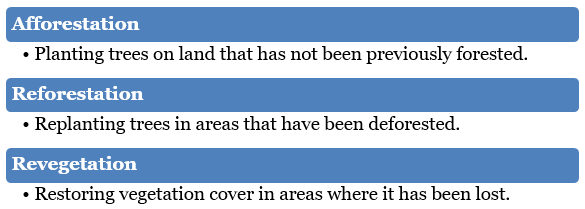Recent research suggests for indianzing common practice standards in carbon markets so that the agroforestry sector could contribute an additional carbon sink of over 2.5 billion tons of CO2 equivalent by 2030.
The Verified Carbon Standard (VCS) Program is the world’s most widely used greenhouse gas (GHG) crediting program. It drives finance toward activities that reduce and remove emissions, improve livelihoods, and protect nature.
Carbon credits is a carbon trading mechanism, which allows the owner to emit a certain amount of carbon dioxide or other greenhouse gases (GHGs).
Agroforestry is the interaction of agriculture and trees, including the agricultural use of trees.

Carbon sequestration is the process of capturing and storing atmospheric carbon dioxide.